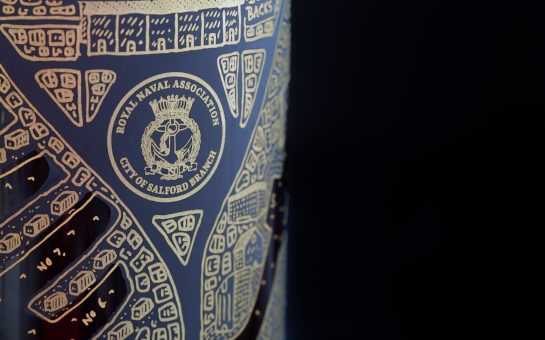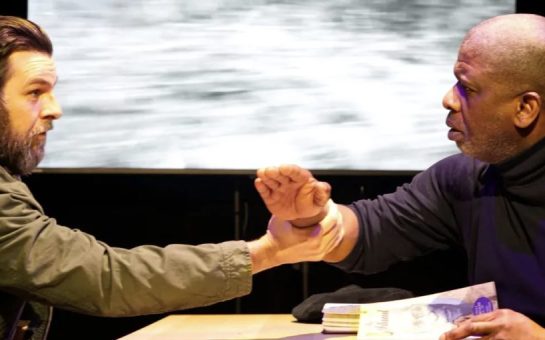MM takes a look around a special exhibition focusing solely on the local work of revered photo-documenter Martin Parr, along with Manchester Art Gallery’s very own senior curator Natasha Howes.
A wide-eyed 18-year-old moving from a sleepy town to a big city is nothing out of the ordinary.
Yet when Martin Parr migrated from the Home Counties to the home of northern soul in the 1970s, not even he could’ve predicted the enormous effect Manchester would go on to have on him and his career.
Surrey-born Martin Parr has become one of Britain’s most renowned photographers.
He has developed an international reputation via his endless curiosity into what makes us tick – whether it is the food we eat, the fashions we wear, what we buy or our leisure activities, Martin has the ability to sum up a culture, a season, or even a decade with his camera in hand, presenting the familiar in his own distinctively wry way.
Studying at Manchester Polytechnic in the early 70s, Martin was almost kicked out after his first year.
“In these days the idea of a college was to learn to be a photographer by becoming an assistant,” he said.
“I quickly got fed up with this and started working on my own projects.”
It’s these very projects that welcome you into the new exhibition: Martin Parr: Return to Manchester currently decks out the top two rooms of the Manchester Art Gallery.
His early work in black and white documented the afternoons he would escape the Polytechnic to work on his own desires, be it armed with an underwater camera in the grim northern rain or sat wondering at those who inhabited the Yates’ Wine Lodge each lunchtime.
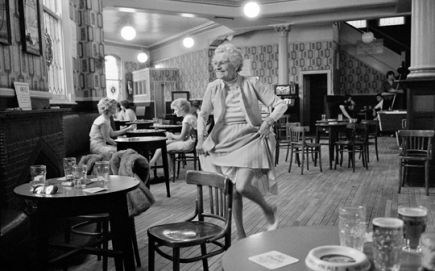
Meandering through the first room you not only follow Martin’s career as he progresses from project to project, but you grow with the city through such drastic change over only a couple of decades.
Be it the enormous shirt collars and flared jeans in the 70s to a family touring the Trafford Centre in 2008, Martin’s work is a real “leveller” according to exhibition curator Natasha Howes, who met with Martin frequently last summer as he shot the new commission for the Gallery.
“You don’t have to know a lot about history because Martin’s work is so accessible,” says Natasha.
“Of course there are people who visit and Martin’s works provokes a lot of memories, but we also see a lot of young people through the door, who of course didn’t live through the 70s and 80s but are still able to take a lot away.”
Howes believes that it is Parr’s democratic attention to detail that separates him from other photographers, and is what gives his work such reach.
“This is a man that photographs anybody and everybody. He gets in closer than others do and he has absolutely no fear in putting a camera right in your face.
“Social conventions go out of the window with Martin, and with that he is able to create this authentic snapshot of Mancunian culture in every one of his photos,” which ultimately has made the exhibition a huge hit.
MM took a look around the exhibition with Natasha providing insight into three of Martin’s most eminent Mancunian collections, including the new 2018 commission shot last summer…
The Real Coronation Street (1973)
During their 1973 summer holidays, Parr and fellow student Daniel Meadows set out to encapsulate the ‘real’ Coronation Street. They wanted to document something that they wished would stand the test of time, even though the area was set to be demolished.
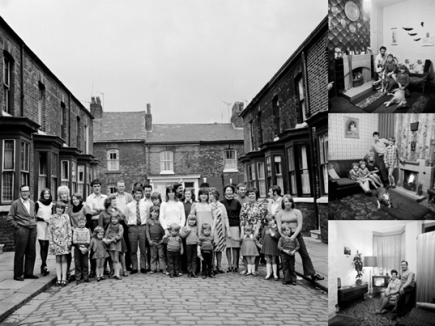
June Street in Ordsall, Salford was one of the last remaining roads used to provide exterior shots for the soap opera. The two students were desperate to capture the friendly atmosphere that, to them, epitomised northern working class life.
The pair slipped a hand written letter through each door and toured living rooms for the next few evenings, capturing residents around their fireplaces and television sets, surrounded by ornaments, patterned fabrics and coloured carpets.
“People are so fascinated with the ‘olden days’,” says Natasha.
“There is a real interest in how the city has changed. The amount of people that will say, ‘Oh my Nan’s living room was exactly like that,’ speaks for itself!”
As we amble from picture to picture, engulfed in each family’s world, Natasha points out that it’s not just the décor that you can see has changed, but society also. Every man, be it a father or husband, is uncoincidentally standing tallest in every photo.
“In society today we just wouldn’t talk about the man being the head of the family anymore, so these pictures have such big implications of the social change that has occurred as well.”
Point Of Sale (1986)
The Documentary Archive of Salford commissioned Martin in 1986 to capture the everyday habits of the city’s shoppers.
This would be one of Martin’s first ventures into colour as he morphed into his more recognisable style of the last three decades.
Photographers weren’t taken as seriously when shooting in colour until the likes of Egglestone and Stephen Shore began appearing in museums towards the end of the 70s.
Upon setting up the Salford Commission, it was agreed that the use of colour was pivotal to embody its vibrant role in retail at the time.
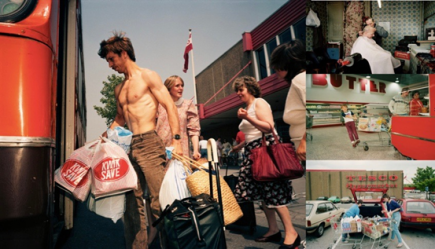
Over the course of taking hundreds of photographs for the commission, Martin engrained himself into the fabric of traditional shops – often family-run and still with an enormous sense of personality and gossip, despite the emergence of larger hypermarkets and shopping centres.
He camped for hours on end in ladies’ hair salons, capturing those that would bring their packed lunches and make a day of it, and he would tour Tupperware parties and family bakers up and down the area to embrace the balance between a personal service and making a profit.
In his diary, one of the first he was asked to keep whilst shooting, he wrote: “One thing is dawning on me: one breed of shops that has survived very well are barbers and hairdressers, these cannot be replaced by supermarkets, the personal service is vital.”
The battle between personality and profit is striking just by taking a glance at the collection sprawled across the far wall of the first room.
The anonymity of larger, more impersonal stores is captured with fill in flash, making the blank aisles of Iceland and Tesco seem more alien in comparison to those aforementioned salons and corner shops.
Natasha thinks this series was “ground-breaking”, not only in Martin’s use of colour which he has now become synonymous with, but because of the changing attitudes he managed to turn into print.
This is a period that saw consumers shift away from loyalty and towards the new and exciting hypermarkets, where everything and more was now at shoppers’ fingertips.
Return to Manchester (2008)
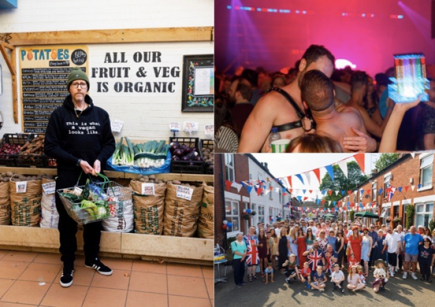
With it being 10 years since Martin last photographed Manchester, it only seemed right for the gallery to commission Parr to undertake a completely fresh look at the city and how we live today.
The second room of the exhibition is scattered from wall to ceiling with what Parr’s lens was attracted to last summer. Media City and Pride Festival feature as prominently as street parties and 21st birthday celebrations, highlighting that despite the emergence of staple institutions, Parr was still eager to place a scope on our communities.
Natasha was happy how Martin’s return to Manchester encapsulated the multicultural nature of our city, especially how inclusive we are.
“When I grew up my parents would never have dreamed of taking me to a Pride festival celebrating LGBT, yet I was there, with my two kids waving our flags and watching the parade.
“It felt like whole of Manchester was out celebrating, which is something we could really be proud of because this isn’t something that happens everywhere in the world, and it was great Martin could capture it.”
Natasha revealed that Martin’s almost childlike excitement for the next photo had him clambering for that one more shot way past 10 o’clock at night, even after a full day’s shooting.
This relentlessness is what meant no stone was left unturned in Parr’s quest to highlight not only the new infrastructure that has arisen, but the new trends and attitudes that sum up what Manchester is like to live in today – for the city’s current dwellers to relate to and for future generations to look back on.
Martin Parr: Return to Manchester will show in Manchester Art Gallery until Monday April 22.
